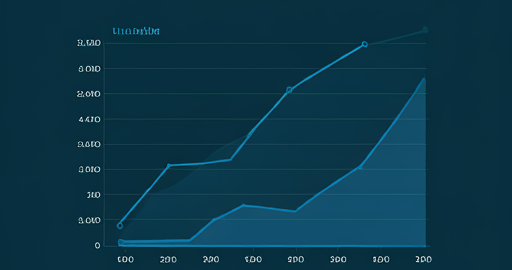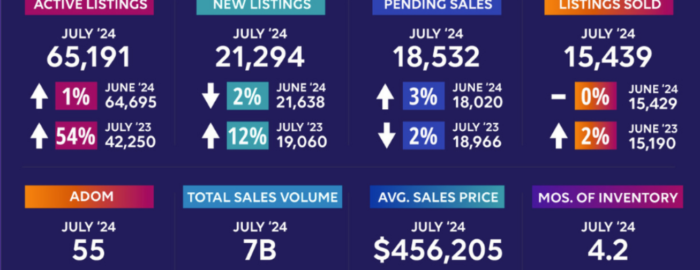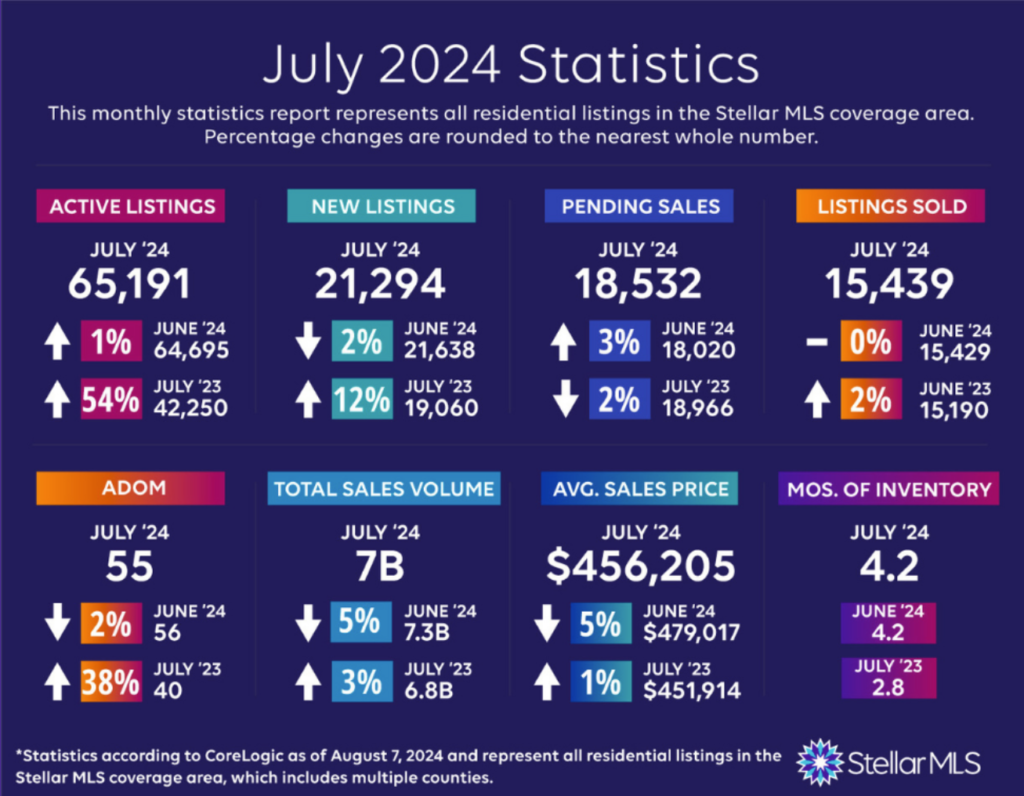As we move deeper into the final quarter of 2024, the Pinellas County real estate market continues to evolve, reflecting the broader economic environment and seasonal trends. October’s market data highlights shifts in buyer behavior, inventory levels, and pricing. Let’s explore the numbers and what they mean for buyers and sellers.
Year-Over-Year Highlights: October 2024 vs. October 2023
- Sales Volume:
- Single-family homes: 1,027 closed sales (-24.3% YoY).
- Townhouses/condos: 379 closed sales (-37.3% YoY).
Takeaway: Sales remain lower than last year, impacted by high mortgage rates and cautious buyers.
- Prices:
- Single-family homes: Median price declined slightly to $460,000 (-1.1% YoY).
- Townhouses/condos: Median price fell to $282,500 (-6.6% YoY).
Takeaway: Prices are softening, with condos experiencing more significant corrections than single-family homes.
- Inventory and Supply:
- Single-family homes: 2,793 active listings (+29.9% YoY) with 3.5 months supply (+52.2% YoY).
- Townhouses/condos: 3,113 active listings (+30.0% YoY) with 6.0 months supply (+81.1% YoY).
Takeaway: Inventory is growing steadily, shifting the market closer to a balance between buyers and sellers.
- Market Activity:
- Median time to contract:
- Single-family homes: 37 days (+117.6% YoY).
- Townhouses/condos: 65 days (+209.5% YoY).
Takeaway: Homes are spending significantly more time on the market, reflecting a more deliberate pace among buyers.
- Median time to contract:
Month-Over-Month Trends: October 2024 vs. September 2024
- Sales Volume:
- Single-family homes: 1,027 closed sales (+0.1% MoM from 1,026 in Sept. 2024).
- Townhouses/condos: 379 closed sales (+0.3% MoM from 378 in Sept. 2024).
Takeaway: Sales volumes stabilized month-over-month, indicating a steady demand despite economic headwinds.
- Prices:
- Single-family homes: Median price decreased slightly to $460,000 (-3.2% MoM from $475,000 in Sept. 2024).
- Townhouses/condos: Median price rose slightly to $282,500 (+2.2% MoM from $276,500 in Sept. 2024).
Takeaway: Single-family home prices dipped modestly, while the condo market saw a slight recovery.
- Inventory:
- Single-family homes: 2,793 active listings (-5.3% MoM from 2,950 in Sept. 2024).
- Townhouses/condos: 3,113 active listings (-9.4% MoM from 3,435 in Sept. 2024).
Takeaway: Inventory levels are beginning to decline slightly, a typical seasonal trend.
- Market Activity:
- Median time to contract:
- Single-family homes: Increased to 37 days (+8.8% MoM from 34 days in Sept. 2024).
- Townhouses/condos: Increased to 65 days (+18.2% MoM from 55 days in Sept. 2024).
Takeaway: Properties are taking longer to go under contract as buyers weigh their options.
- Median time to contract:
What Does This Mean for Buyers and Sellers?
- For Buyers: With inventory still higher than last year and homes taking longer to sell, you have more negotiating power. Keep an eye on softening prices, especially in the townhouse/condo market.
- For Sellers: Pricing competitively and preparing your home for market are crucial. Be patient, as homes are taking longer to sell in this environment.
Final Thoughts
The Pinellas County real estate market is moving toward a more balanced state as 2024 progresses. While activity remains subdued compared to 2023, opportunities exist for both buyers and sellers who are prepared to adapt to these changing conditions.
If you’re considering buying or selling in Pinellas County, reach out to us for personalized insights and strategies to make the most of today’s market.






